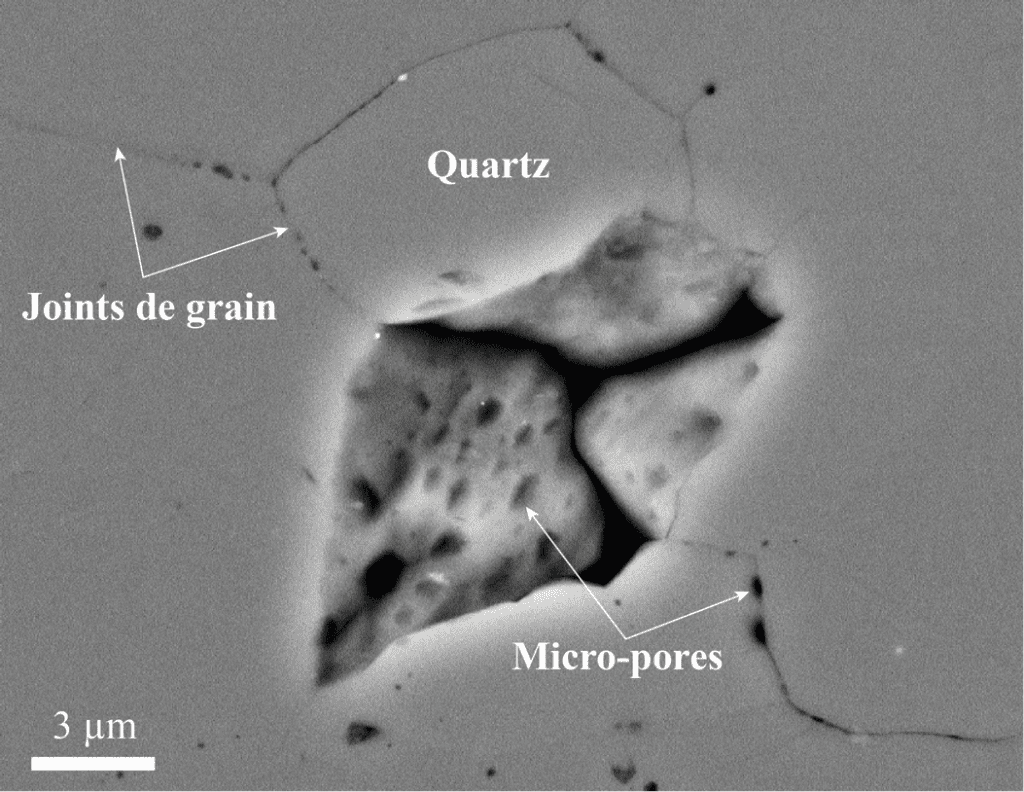Jacques Précigout, Scientist at ISTO, and his team publish in the journal Scientific Reports new data linking quartz creep to the production of micro-porosity, the main support for geological fluid circulation.
The presence of porosity is a sine qua non condition for the circulation of fluids through rocks. The resulting fluid-rock interactions have a major impact on many geological phenomena such as metamorphic reactions, ore deposition and earthquake nucleation. However, the ability of rocks to flow under the effect of high temperatures at depth – also called ductile or viscous deformation – means that the persistence or production of such porosity under these conditions remains highly debated. It is in this context that a recent study, conducted by the Institut des Sciences de la Terre d’Orléans (ISTO) and published in the journal Scientific Reports, has identified pores well below the micron size and associated with the plastic deformation of quartz in the western granite of Naxos (Cyclades, Greece). Through detailed analysis of backscattered electron diffraction around these sub-micron pores, this study suggests that they result from the coalescence of crystalline defects (dislocations) within the quartz grains, before being themselves accumulated at the grain boundaries neo-formed by dynamic recrystallization. These new data show the importance of plastic deformation, which contributes largely to the ductile regime of lithospheric rocks, in the production of deep micro-porosity and its consequences within the Earth’s crust.
Reference | Précigout, J., Ledoux, E., Arbaret, L. & Spriet, C. Porosity induced by dislocation dynamics in quartz-rich shear bands of granitic rocks. Scientific Reports 12: 6141, doi.org/10.1038/s41598-022-10053-x (2022)

Figure | Micro-pores identified by electron microscopy in quartz aggregates of the Naxos granite (Cyclades, Greece). These micro-pores are mainly observed along the grain boundaries, here revealed by the tearing of a quartz grain during the polishing of a sample.


